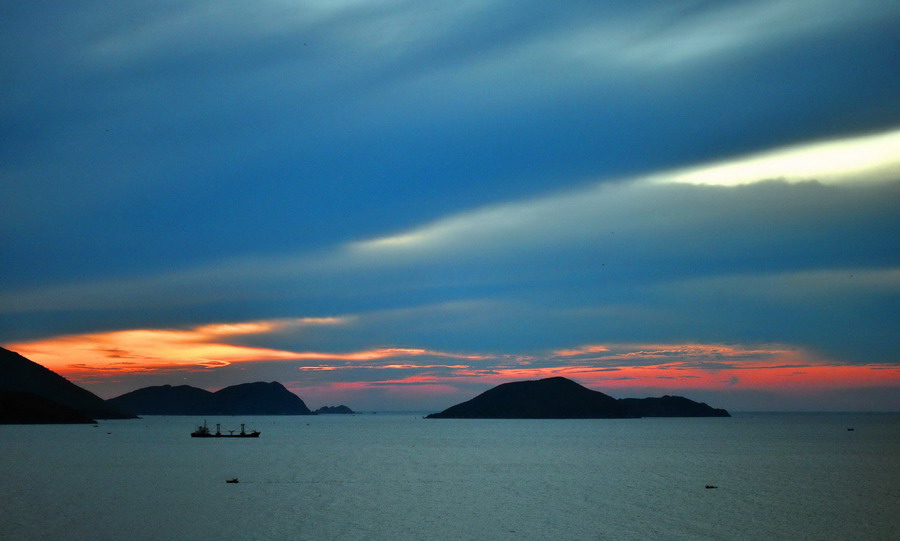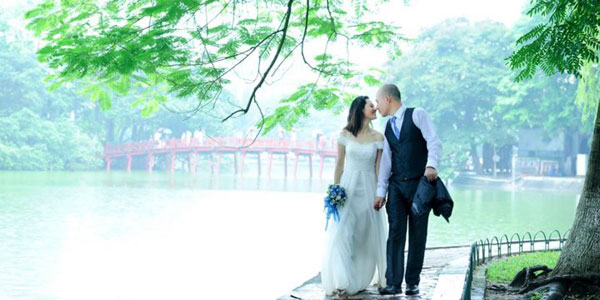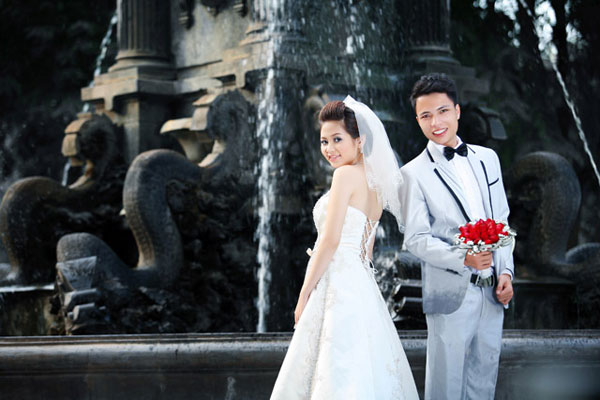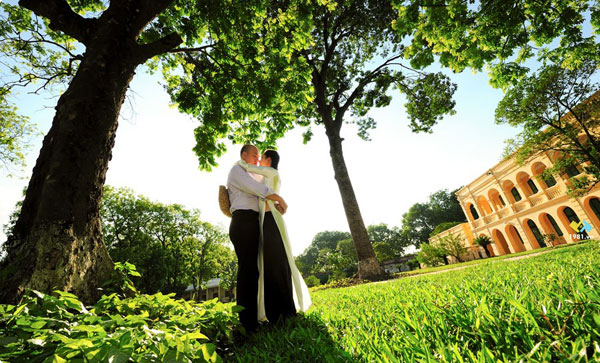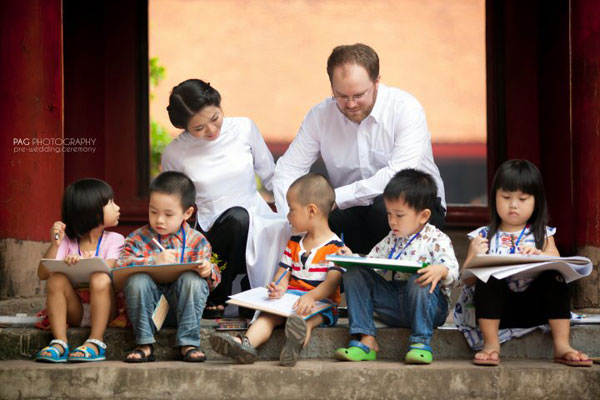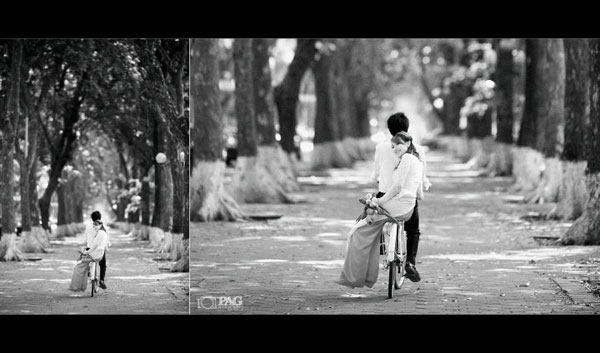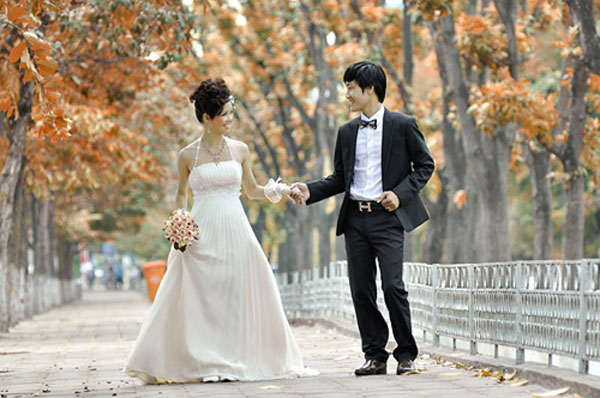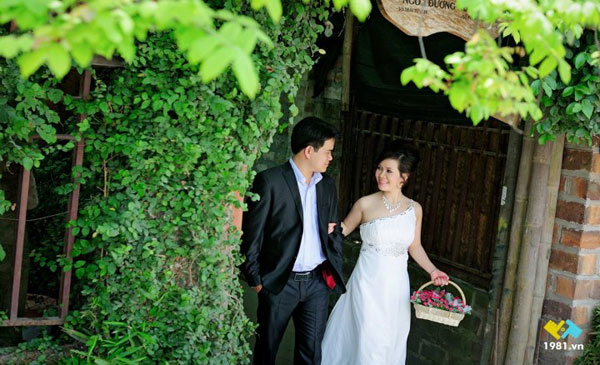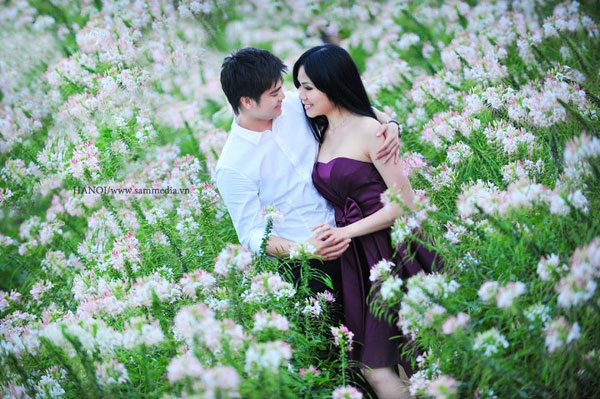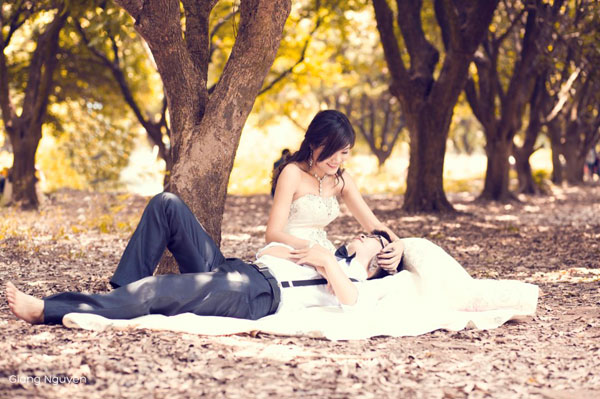The legend of Hoan Kiem Lake
 Hoan
Kiem lake means “lake of the returned sword”. This name is related to
the famous historical legend of King Le Thai To. And before this legend,
Hoan Kiem Lake used to be called Luc Thuy Lake (or Green Water Lake)
since the water was green all the year round. In 15th
century, it was named Hoan Kiem Lake after the legend of Emperor Le Thai
To, which is somehow similar to the story of King Arthur and the Lady
of the Lake's.
Hoan
Kiem lake means “lake of the returned sword”. This name is related to
the famous historical legend of King Le Thai To. And before this legend,
Hoan Kiem Lake used to be called Luc Thuy Lake (or Green Water Lake)
since the water was green all the year round. In 15th
century, it was named Hoan Kiem Lake after the legend of Emperor Le Thai
To, which is somehow similar to the story of King Arthur and the Lady
of the Lake's.
This legend is really
interesting. Close your eyes and turn back time to the Le Dynasty 6
centuries ago to witness the legendary story. During the war against the
Minh aggressors, King Le Thai To was given a precious fairy Sword by
the Golden Turtle God. After 10 years of continuous struggling, the King
finally defeated the Chinese and reclaimed the nation’s independence.
After that, on a nice day, while boating on lake Luc Thuy, a large
turtle came towards him.
It
immediately grabbed the sword with its mouth and submerged. The king
mourned the lost of such a valuable sword, yet could not find either the
turtle or the sword. He realized that the God must have lent him the
sword to drive back the enemy, but then that his nation was free, the
sword must be returned. Hence, King Le Thai To named the lake Ho Hoan
Kiem or Lake of the Restore Sword after this episode.
Since the reign of King Le Trung Hung (XVI century), every King in the Le dynasty, and Lord Trinh have all contributed to the beauty of the lake. Lord Trinh Giang built Khanh Thuy shrine on Ngoc island on the north end of the lake. He also had the two man made hills built across from Ngoc son Shrine.
Since the reign of King Le Trung Hung (XVI century), every King in the Le dynasty, and Lord Trinh have all contributed to the beauty of the lake. Lord Trinh Giang built Khanh Thuy shrine on Ngoc island on the north end of the lake. He also had the two man made hills built across from Ngoc son Shrine.
At the end of the Le Dynasty, Khanh Thuy was toppled by
Chieu Thong. A philanthropist named Tin Trai built Ngoc Son pagoda,
which was renamed into Ngoc Son shrine during the reign of Thieu Tri III
(1843) as it was no longer a Buddhist shrine.
Instead, it became a
shrine of Van Xuong, a deity, in charge of literature and the various
tests required to become a Mandarin. It has also been a shrine of
General Tran Hung Dao, a national Hero who secured numerous victories
against the Mongols.
Beautiful sights of Hoan Kiem Lake

Ngoc Son Temple and The Huc Bridge
Hoan
Kiem Lake is now situated inside a complex of Ngoc Son Temple, The Huc
Bridge, Pen Tower in the surroundings, making a sparkling colorful
natural picture!
Ngoc Son has undergone a lot of renovations, one among
which was the addition of Thap But (translated as Pen Tower) on its
hill, which was once called Dao Tai. Three words were inscribed on the
tower: "Ta Thien Thanh" or "write on blue sky".
Inside the gate a pool
resembling the shape of an ink well was added. Beyond the ink well is
The Huc bridge, which means "where the sun light is absorbed". The
bridge leads to Dac Nguyet Lau (or "Moon Light tower") - Ngoc Son
shrine.
Beyond the gates to the shrine, there are two walls called bang
Rong and bang Ho (dragon and tiger slate), where the names of those who
passed the national test were inscribed.

Turtle Tower - Thap Rua - Hanoi
What
could not be missed in this beautiful complex is the Turtle Tower,
which lies in the middle of the Lake, so as to remind Vietnamese people
of the Turtle God of his great assistance.
It was told that King Le
Thanh Tong used to fish here. Lord Trinh also built the structure to
house his entourage while visiting the lake.

Hoan Kiem Lake - The heart of Hanoi
Nowadays,
Hoan Kiem Lake has become the heart of Hanoi. People not only come here
to travel but they also come here to socialize, to talk, to do
business, and to relax.. As early as pre dawn on any given day hundreds
of people are exercising and have already started they’re days here, you
will see locals of all ages jogging and practicing tai chi.
Later in
the day, you will find grandparents wheeling kiddies in strollers, and
young couples strolling around holding hands.




